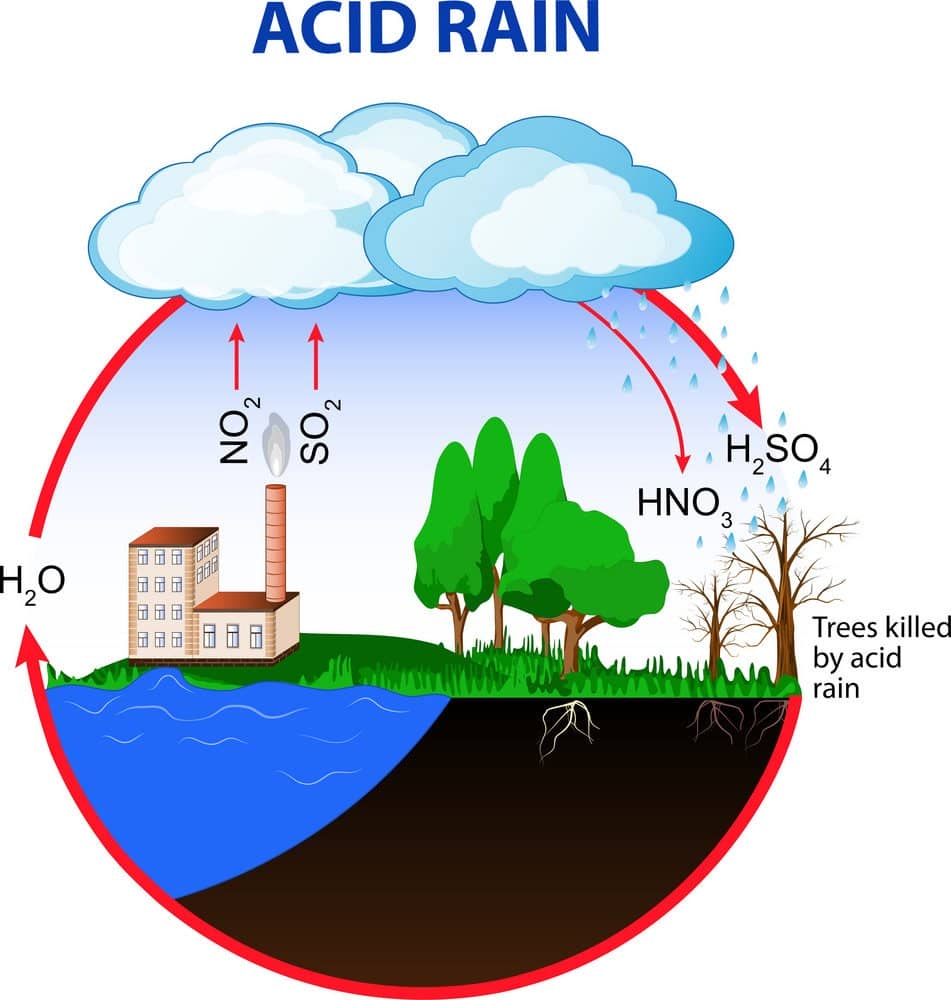| Posted on
Acid rain is a type of air pollution that occurs when sulfur dioxide and nitrogen oxides are released into the atmosphere and react with water, oxygen, and other chemicals. These reactions produce acids, which then fall to the Earth's surface in rain, snow, fog, or as dry particles.
The main sources of sulfur dioxide and nitrogen oxides are the burning of fossil fuels, such as coal and oil, in power plants, factories, and vehicles. These pollutants can travel long distances in the air, so acid rain can be a problem even in areas far from the sources of pollution.
Acid rain can have a number of harmful effects on the environment, including:
- Damage to forests and lakes.Acid rain can make lakes more acidic, which can kill fish and other aquatic life. It can also damage trees, making them more susceptible to disease and pests.
- Corrosion of buildings and other structures.Acid rain can corrode metal, stone, and other materials, causing damage to buildings, bridges, and statues.
- Health problems.Acid rain can irritate the lungs and eyes, and it may also contribute to respiratory problems such as asthma.

Also Read:- How do you measure rainfall?
0
0 Comment
| Posted on
Acid rain is rain that has undergone chemical change and became acidic. It is brought on by the atmosphere's release of sulphur dioxide (SO2) and nitrogen oxides (NOx), mostly from the burning of fossil fuels including coal, oil, and gas in motor vehicles, industrial processes, and power plants.
These pollutants have the potential to undergo chemical reactions and produce sulfuric acid (H2SO4) and nitric acid (HNO3) when released into the atmosphere. These acids can then combine with atmospheric water vapour to produce acidic precipitation, which can take the form of rain, snow, fog, or even dry particles.
Nitrogen oxides and sulphur dioxide are the principal culprits in acid rain. The main source of sulphur dioxide emissions is the burning of sulfur-containing fossil fuels. When nitrogen and oxygen react at high temperatures, as occurs in industrial operations and car engines, nitrogen oxides are created.

Acid rain can harm the ecosystem if it is allowed to fall to the ground. It can increase the acidity of water and soil by lowering their pH levels. Acidic bodies of water can harm aquatic species, including fish and amphibians, by impairing reproduction, destroying gills, and upsetting the ecology as a whole. Additionally, acid rain can harm vegetation, degrade infrastructure and structures, and hasten the decay of statues and monuments.
Many nations have taken action to limit sulphur dioxide and nitrogen oxide emissions in an effort to lessen the impacts of acid rain. These include using alternate energy sources, enacting legislative measures to restrict emissions from industrial operations, and introducing greener technology.
0
0 Comment
| Posted on
Acid rain is a form of environmental degradation caused by emissions of sulfur dioxide (SO2) and nitrogen oxides (NOx) into the atmosphere, primarily from burning fossil fuels and industrial processes. These pollutants chemically react with water vapor, oxygen, and other substances, forming sulfuric acid and nitric acid. When these acids mix with rainwater, they create acid rain. This acidic precipitation can harm ecosystems by damaging soil, lakes, rivers, and vegetation. It also erodes buildings, statues, and infrastructure made of limestone or marble. Acid rain's far-reaching impacts extend beyond its source, often affecting regions distant from pollution sources. This environmental issue underscores the importance of reducing air pollutants to safeguard ecosystems and human-made structures.

Also Read :- Why is sodium kept immersed in kerosene oil?
0
0 Comment
nehagoyal022@gmail.com | Posted on
Acid rain is a term that includes any form of precipitation with acidic components, such as sulfuric or nitric acid that fall to the ground from the atmosphere in form of rain.Distilled water, which contains no carbon dioxide, has a neutral pH of 7. Liquids with a pH less than 7 are acidic in nature, and those with a pH greater than 7 are basic in nature.Clean rain has a bit of sourness with a pH of 5.6. This happens because when carbon dioxide and water in the air mix, they create a mild acid called carbonic acid. Acid rain comes in many forms: rain, snow,hail, and fog, and as acid particles, aerosols, and gases. Acid rain happens when gases called sulfur dioxide (SO2) and nitrogen oxides (NOx) mix with water in the air. This creates sulfuric acid and nitric acid.
Causes of Acid Rain:
- Combustion of fossil fuels (coal, oil, natural gas, wood, etc.) for energy.sulphur dioxide and nitgogen dioxide is emitted during combustion.these gases mix with rain and make rain acidic.
- Emissions of sulphur dioxide and nitrogen dioxide from motor vehicles, airplanes, power plants and industries causes acid rain.

Also read :- Why does uric acid increase in the body?
0
0 Comment
